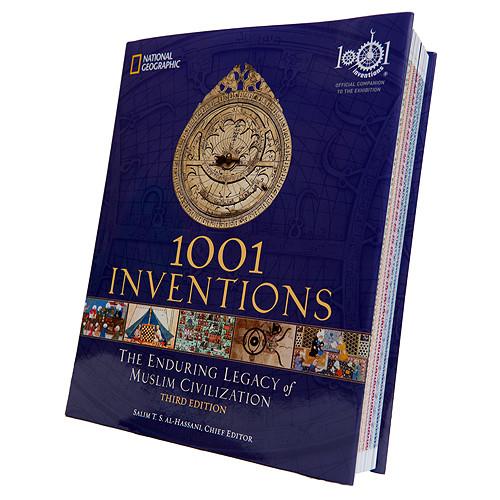1001 Inventions: The Enduring Legacy of Muslim Civilization
National Geographic
- SKU:
- FPNG1001
- MPN:
- 9781426209345
Chief Editors - Prof. Salim TS Al-Hassani and Professor Mohamed El-Gomati
ISBN: 978-1426209345
Publisher: National Geographic
The society’s often overlooked achievements are shared in 1001 Inventions: The Enduring Legacy of Muslim Civilization.
1001 Inventions highlights how many of the most important scientific and technological discoveries and building blocks of modern civilization came out of Muslim society during the centuries after the fall of ancient Rome — a period known as the Dark Ages in European civilization. However, while the Western World was in the doldrums, a renaissance was occurring in the Muslim world. The book highlights these outstanding achievements and the people behind them. For example:
• The House of Wisdom (8th-14th century), an immense scientific academy in Baghdad where an impressive collection of worldly knowledge was accumulated and developed, was an unrivaled center for the study of humanities and science.
• Jabir ibn Hayyan (722-815), known as the father of chemistry, worked in Iraq devising and perfecting the processes of sublimation, distillation, crystallization, purification, oxidation, evaporation filtration and others. He discovered processes for the preparation of hair dyes, leather and illuminating manuscript ink.
• Al-Zahrawi (936-1013), a physician and surgeon from Muslim Spain, wrote a 30-volume medical encyclopedia, giving detailed accounts of dental, pharmaceutical and surgical practices. He designed more than 200 surgical instruments such as syringes, droppers, scalpels and forceps. His book also described dyes that turned blond hair black, lotions for straightening curls and suntan lotion.
• Al-Jazari (12th century) was a highly skilled engineer from southern Turkey whose connecting rod system revolutionized the concept of automatic machines, including the Elephant Clock — a symbol of status that incorporated robotics with moving, time-telling figures
• Ibn Nafis (1210-1288), a famous philosopher and physician who was born in Syria and lived in Egypt, was the first to describe pulmonary circulation of venous blood passing into the heart and lungs via the ventricles. He was finally credited with this discovery in the early 20th century when his manuscript was discovered in Berlin.
• Sinan (1489-1588) was the master architect for the Ottoman Empire. He designed and built 477 buildings during his long career in the service of three sultans in Turkey. His work includes the Selimiye Mosque in Edirne, which has the highest, most earthquake-defying minarets in all of Turkey. His designs revolutionized the dome, allowing for greater height and size.
The book's seven chapters are richly illustrated and provide insight into the everyday life of early Muslim civilization and the related and subsequent growth and progress of Western civilization. There is also an extensive reference section, a glossary of subjects and people, charts, timelines and maps illustrating the inventions and contributions, remarkable photographs, artifacts, historic documents and drawings.
 US Dollar
US Dollar
















